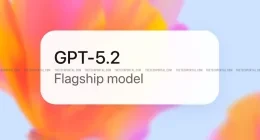Continuing with numerous safety measures which cab aggregators have been implementing from commuter safety, Ola is today announcing the launch of ‘Number Masking’. In line with that, the company is also keeping a good $20 Million specially for safety-related measures and their implementation.
‘Number Masking’ enables customer’s mobile number to remain undisclosed to drivers. With this, calls made by the driver-partners can be traced by Ola from archived recordings at all times. The Number Masking feature is active for driver-partners in all cities where Ola operates.
To enable Number Masking and traceability of calls, Ola has integrated a cloud telephony solution, which sends an encrypted number to the driver, whenever a customer books a cab and all further communication from the driver is channelled through this number.
Drivers, when they attempt to call the customer from their Ola device, shall not see the customer’s mobile number but will automatically be routed through an encrypted number to the customer. With this, driver-partners will not bear the cost of calls made to customers, since they would now be routed directly through the device.
And while the feature is obviously great in tech and usability, this will also be the first time that such a necessary feature is being introduced in India’s cab-aggregation market. Customers have often complained of their numbers being available to driver partners, thus raising privacy concerns. ‘Number Masking’ is a welcome addition towards solving that issue.
The new features come on the back of Ola’s commitment to allocate $ 20mn for safety initiatives over this year. Ola further clarified, that all driver-partners on the Ola platform are verified and licensed by the local authorities.
Ola’s app already houses other relevant safety measures — common to all cab-hailing apps — like live GPS tracking, sharing of ride details, feedback and reporting during the ride as well as an in-app SOS button. The SOS button, for example, can be used while the ride is in progress and on activation, an alert is sent to the verified emergency contact with the customer’s CRN, user details (name, email id and contact number), location where the alert was raised, cab and driver details.
Ola, along with Uber, have found it hard to operate with India’s national capital — also unfortunately often dubbed as one of the most unsafe cities in India. Both the companies have had their share of controversies, with driver partners indulging in crimes against women.
Both brands, which together account for over 95% of India’s cab market share, are yet to receive operating licenses from the Delhi government, to operate within the city.
The Tech Portal is published by Blue Box Media Private Limited. Our investors have no influence over our reporting. Read our full Ownership and Funding Disclosure →






